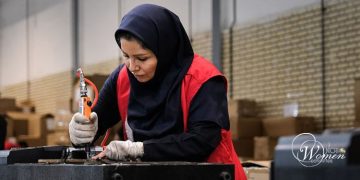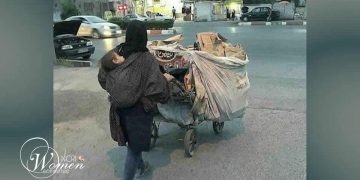Problems and Challenges Faced by Female Workers in Iran
Welcome to our podcast, where we explore important global issues often overlooked by mainstream media. Today, we’re focusing on recent events and ongoing challenges in Iran, drawing on some recent reports.
That’s right, and we’ll be looking at two distinct but perhaps connected situations. First, the chronic struggles faced by female workers across the country, and second, a recent deadly explosion in Bandar Abbas.
Segment 1: The Plight of Female Workers
Let’s start with the situation of female workers. Reports indicate that women in Iran face significant gender and social inequalities imposed by the clerical regime. Despite often being essential household breadwinners, they aren’t legally recognized as such.
And this isn’t just a minor inconvenience. These women are frequently forced to work long hours, often beyond standard limits, in production workshops. Then, after exhausting shifts, they return home to carry out household duties, caring for children and ailing family members. It’s a double burden.
Getting accurate data on these workers is difficult. Many are in informal jobs or home-based occupations, making them particularly vulnerable.
And vulnerable they are. These informal workers are frequently employed under vague or pre-signed blank contracts. A “pre-signed blank contract,” or “white-signed contract,” is where the worker signs before key terms like salary or duration are filled in, giving the employer total control. This practice is described as illegal or exploitative in many places and strips workers of basic protections.
As a result, they often earn less than the legal minimum wage. And speaking of the minimum wage, for 2025, it was set at about 10 million and 390 thousand tomans, or roughly 111 US dollars.
Which is incredibly low considering the cost of living. According to government media, that minimum wage isn’t even enough to cover the weekly expenses of a three-person family. A member of the High Council of Workers’ Unions estimated the real cost of living is closer to over 50 million tomans, or about 530 USD.
Economic hardships are immense, with expensive housing, healthcare, and education. We’ve seen huge price increases: a minimal food basket up over 340% in four years, basic items like sugar, oil, and potatoes up over 400%, and red meat over 800%. Medicine and healthcare prices have increased by 400% in the last five years, leading people not to fill prescriptions.
And female workers, many of whom are heads of households, often earn even less than the already insufficient base wages. An ILNA News Agency report from 2019 placed Iran at the very bottom globally for gender wage inequality.
They are also frequently deprived of basic rights and benefits within workshops. This includes wage benefits and crucial facilities like maternity or breastfeeding leave. An activist estimated in 2022 that about 2 million female workers in the informal sector don’t even receive the minimum wage and lack job benefits.
This hidden exploitation generates significant profits for employers. Many female workers are forced to accept monthly salaries as low as 2 to 3 million tomans – only about 213 to 320 USD – for their grueling labor.
The working conditions themselves can be extreme. Female workers are often forced to work 12 hours a day or take on night shifts due to a lack of protection against exploitation.
And job insecurity is a major issue, particularly for women. As labor activist Hassan Habibi noted, “Women face more harm than men due to job insecurity.” Many private sector companies reportedly dismiss female workers when they become pregnant. Sudabeh, a mother of two, shared that she works over 50 hours a week, exceeding the legal limit of 44, just to keep her job, because getting hired again is so difficult. Employers often ask about marital status and prefer women who are single or whose children are grown.
The sources also highlight severe workplace safety issues. While official figures show thousands of work-related accidents and hundreds of deaths annually, these only count insured workers. Many workers are uninsured, particularly women.
Indeed, female workers generally lack insurance, transportation, and meal services. Some have worked for 15 years without insurance or contracts, dramatically increasing their vulnerability.
Many work in environments that are not inspectable or during hours when inspectors aren’t present. Occupational injuries for female workers are reportedly increasing daily.
Tragic examples abound. In December 2022, five women died when a van carrying them from work caught fire because they used a picnic stove for heating due to lack of heating in the vehicle. Another woman drowned in a water basin at a factory.
Earlier incidents include a 26-year-old mother killed in June 2022 when her scarf got caught in a machine. A 40-year-old woman died in May 2022, pulled into bakery machinery when her clothing got caught. And in November 2021, a 21-year-old woman died in a textile factory because her headscarf was caught in a machine. These tragedies underscore the risks related to clothing and safety standards.
Beyond physical accidents, female workers face other hazards. In some workshops, they work without ear protection, risking auditory and neurological damage. Employers sometimes push workers to accept higher pay instead of providing insurance.
Workers often contribute to insurance, but no payments are made in return for their contributions.
Female workers in pharmaceutical companies are exposed to chemical and hormonal pollutants that can damage their lungs, disrupt physiological systems, and even lead to physical changes like excess facial hair or high testosterone levels, contributing to mental health problems.
These women endure these severe issues for meager wages, often on daily contracts that could end at any moment. They are often unaware of the significant dangers because employers don’t inform them during hiring.
The legal system offers little recourse. The National Union of Female Workers noted that despite labor law prohibiting discrimination, employers hire women at lower wages than men, and women are forced to accept due to financial need. The sources suggest widespread corruption means written law has little practical weight for women.
We hear the toll this takes on individuals. Zahra, 43, lives on the outskirts of Tehran and works long hours, but even with her husband working, they can’t meet expenses; one salary just covers rent. Despite working as hard as men, she doesn’t receive equal wages, benefits, or overtime pay. Protesting means losing her job.
Simin, who works in automotive parts, described herself as “a woman who cries every day at the grave of her dreams”. She started working young due to her parents’ disability and had to accept being unmarried as a hiring requirement, becoming dependent on her job. Despite qualifications, she and her colleagues see no progress or salary increases in the male-dominated workshops.
Vahideh, working 12-hour days in an industrial city, is the only woman among 17 male workers in her section. After 9.5 years, her only wish is for less fatigue and a fuller wallet.
The sources argue that these issues for female workers, unlike in many countries, cannot be solved by reforms or unions under the current regime. They suggest the only path is through the organized resistance of Iranian women to overthrow the dictatorship and isolate the regime internationally.
Segment 2: The Bandar Abbas Explosion
This leads us to the second significant event reported in the sources: the deadly explosion at the Sina Company in Bandar Abbas, which occurred around April 25th, 2025. Six days later, flames were still rising from the ruins.
This explosion has been described as one of the deadliest industrial disasters in Iran’s history. Eyewitnesses reported hundreds feared dead. Firefighters couldn’t even approach the core of the blast site.
The human toll is staggering. In one neighboring company alone, 50 female employees were reported missing. Hospitals were overwhelmed with hundreds of severely injured. One witness recounted that 23 out of 30 women at her workplace were killed, some disfigured beyond recognition.
Independent estimates placed the death toll chillingly high, between 600 and 1,000. Yet, the Iranian regime officially claimed only 70 deaths, reportedly banning the Ministry of Health from releasing true figures. Many bodies remained trapped under rubble and heat.
The Sina Company is reportedly affiliated with Iran’s Islamic Revolutionary Guard Corps, or IRGC, and is known to supply explosives and weapons to the military.
Reports suggest the potential cause was the illegal storage of sodium perchlorate, a highly explosive compound used in ballistic missile fuel. It was allegedly disguised as ordinary cargo and stored improperly at a civilian dock.
There are eerie parallels drawn to the 2020 Beirut port explosion. However, the Iranian government reportedly neither requested international assistance nor allowed independent media coverage.
Instead, intelligence and security forces reportedly locked down the city, suppressing information and deterring journalists and even rescue teams. The IRGC and related agencies are enforcing a blackout.
Residents of Bandar Abbas are reportedly angry and heartbroken, blaming the disaster on the regime’s incompetence and corruption. One local voice captured the sentiment: “We are victims of corruption and negligence”.
So, we see two difficult situations highlighted in these reports. On one hand, the systemic, everyday exploitation and hardship faced by female workers across various industries. On the other, a catastrophic event with a massive death toll, including many female workers, linked to potentially illegal activities and followed by intense censorship.
Both scenarios point to significant issues regarding worker safety, transparency, and accountability within the current system, as depicted in these sources. The sources connect these issues to the broader political context in Iran.
Thank you for joining us for this episode. We hope this has provided insight into these serious situations based on the available reports.
That concludes our look at these issues today. Join us next time for another episode.
























